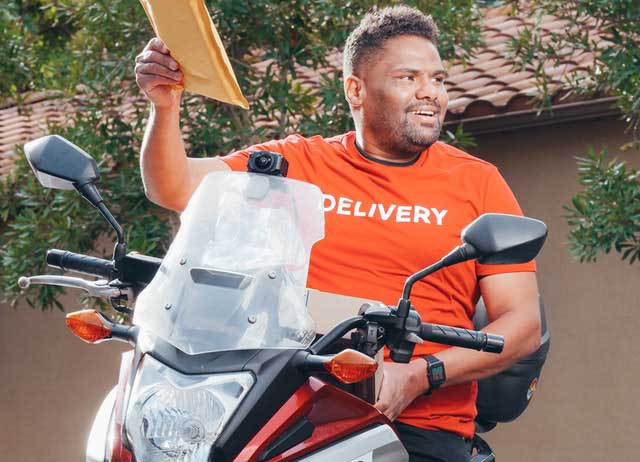Scott Voelker TAS Inner Circle Mastermind Group Review
This article reviews my experience participating in Scott Voelker’s TAS Inner Circle. I hope you find it beneficial as you make a decision about whether to participate in that group or to join another Amazon coaching program (or any coaching program for that matter). I recognize that business owners are all unique, and have varying needs for developing their businesses.
In my case, I ended up dropping out of the TAS Inner Circle group I was a part of shortly after our first conference (for reasons I’ll explain below), and I was given a partial refund: $18,000 out of the $25,000 I’d paid to be part of the group. There was at least one other member of the group who dropped out, shortly before I did. I’ll share those details below.
I will say that for some people, the cost (both time and money) of joining this mastermind group will be worth it, but to get your money’s worth, you most likely will have to be very assertive about making your experience in the group valuable. The main reason for this from my perspective is that Scott and his team are pretty busy people, and are somewhat limited in both what they know or what time they have available to help you figure out solutions to the roadblocks that are keeping your business from growing.
Building a Vinyl Decor Business on Amazon
Amazon Business Coaches Everywhere
First, the Good
As you can see from the review preview paragraphs above, there is a lot of negative in this review, although I ultimately leave it up to you to decided if you should get involved with any of the TAS groups. However, there were some good things that came out of my involvement with the group.
It was great being able to meet people who were in the trenches like I was, aspiring entrepreneurs who came from various backgrounds and who were all taking somewhat different approaches to living the American dream. These people were impressively assertive, positive, and intelligent. The were also humble and ready to learn.
Also, Scott, Joel, Chris, and Angel are super nice people, and I feel like they are generally authentic and genuine in their desires to help people succeed. Most of the criticism you’ll find in this review has to do with their simply being overwhelmed and in some cases underqualified.
The TAS Inner Circle Application Process

My Expectations for Joining the TAS Inner Circle Group
Before ultimately making a commitment to join the group, I had a screening call with Joel Bower. The purpose of the call was to help me understand more of the details of how the group would operate and what I could expect from the group. The call also gave me a chance to provide details about what I needed for my business and to see whether the group was a match for what I needed and expected to accomplish over the year of participating in the group.
Expectation: Tools and Automation Help, including Bulk Product Listing and Updating, Optimizing Sponsored Ads, and Doing Rank Tracking
I told Joel on our screening call that one of my main reasons for considering becoming a member of TAS was to accomplish a very specific objective: getting one on one help with automation tools that would allow us to scale the business. I specifically told him I needed help with doing bulk product updates, Amazon rank tracking, and optimizing sponsored ads. He assured me that there was someone on the TAS team (mentioning Chris Shaffer specifically) who would definitely help me with these goals. There was also an expectation told to me on that phone call by Joel that within 90 days after joining the group, we would see increases in our business that would pay for the cost of being part of the group.
Reality
When I asked during the 2-day conference about software for rank tracking and a strategy for optimizing listings based on rank tracking reports, Chris responded, “We just do ours manually,” with the implication that I’d need to figure it out on my own. That wasn’t a good sign
As I think through all of the advice I’ve received from members of the TAS team, it’s hard to think of much helpful, actionable advice. Most The only one I can think of was Chris’ recommendation (which I researched and figured out how to do on my own) to use Amazon customer data to create a Facebook look-alike audience, which I’m still working on (on my own) turning into an effective launch tool. Chris’ recommendation (a good one) to weed out low performing SKUs from our Amazon PPC ads was something we were already working on, but I was looking for a more efficient and hopefully automated process for doing it. I had hoped to get that out of TAS Inner Circle, but it never happened.
We were looking for help with actionable strategies for creating an audience that we could use to do our launch. I had hoped to come out of the conference with ConvertKit setup, some effective Facebook ads rolling, and the technical elements of a template in place for building a significant audience. Instead, we followed the advice of discontinuing what had made us grow 4x in 2018 over 2017 (adding lots of new products consistently) and saw our growth start to level off.
Expectation: Listing Audits That Led to Strategies to Trigger Sales
One of the other important objectives I had with joining TAS Inner Circle, which I also talked to Joel about during the screening call, was to get expert advice and insight on my product listings. Along with other members of the group, I was eager to have Scott’s team take a look at some of my listings and point out even some simple things that we could quickly change to make a difference and see a lift in our sales. Such an activity would have been highly useful, and might have even made the entire cost of being part of the group worthwhile. For my business, we had over 3,000 product listings, so just finding a few small improvements we could make on any one of them could have been applied to all of them to create more impact.
Reality: No Audits
I was blown away (as were other members of the group who gave feedback about wanting to get more into their product listings after the conference finished) that we didn’t even open our computers during the conference, let alone login to Seller Central and dig into technical details. There was one point during the conference when I had the distinct thought during a discussion of listing optimization and Amazon keyword indexing, “Wow, I’m pretty sure I know more than these guys about how this stuff works.” I mentioned that to my wife right after the conference, but we decided to try to continue to extract value out of the group. Ultimately we were unsuccessful. I actually gave Chris login access to our Amazon account, but it’s been apparent that he took, at most, a cursory look at it and gave no feedback at all regarding our listings.
Expectation: Non-competes for Inner Circle Members and No Conflicts of Interest
Having been in potentially vulnerable situations (where significant business details are shared) before, I asked Joel specifically about whether the members of the group would all be required to sign non-compete and nondisclosure agreements. He assured me that having those agreements in place would be part of the protocol for the group. That was the last mention I ever heard of it. I even made sure to tell Joel that I have two other businesses in the works, Robbins Athletics (sporting goods) and MayBoo Clothing (girls dresses), and asked him to double check to make sure that would not conflict with other members of the group.
Reality: No Non-competes, Overlapping Businesses
As I mentioned above, I was surprised to find out that there are members of the group whose business are small enough that they are still working a full time job and running their businesses on the side, and who could be easily motivated to pivot to copying another business model within the group that would be appealing to them.
I found out right away that one of the members of the group was building his own sporting goods business. It appeared as if he had been informed that there would be another business owner in the group (me) who was planning to build his own sporting goods brand. I made it clear at the beginning of our two-day conference that I had operated an online sporting goods retail store previously and that I was planning to build a sporting goods brand within the next few years. Still, there were things that this business owner shared about what he was doing with his products that should not have been under those circumstances: with no non-disclosure, non-compete agreements in place and a potential competitor listening in as he discussed his strategies for choosing products, sourcing them, and marketing them.
TAS Inner Circle Seems Like a Side Project
The Group Lacked Organization
Leaving the TAS Inner Circle Group
After ignoring the feeling that I had wasted a lot of money and significant time involving myself with this group, I finally felt like it was time for me to get back down to business and try to salvage as much as I could of my initial decision to join the group.
I emailed Scott and told him that the group wasn’t working, that I was going to drop out of it, that it hadn’t lived up to the expectations that were set, and that I would like to be refunded a pro-rated amount (close to $20k) that would be fair to both of us. The response that I got was one of obvious disappointment, a request for me to stay in the group and see it through, and a bit of blaming of me for not getting what I wanted out of it.
Once I emphasized that my decision to leave the group was final, Scott offered to refund half of my entry fee, $12,500 of the $25,000. After sending him a long explanation of why I felt that wasn’t equitable for me, he relented and refunded $18,000. In essence, I’d summarize the experience by saying that I spent $7,000 as an entry to get to know some good people, chat about business, and hopefully be motivated as well as to motivate (which also has value to me, although I wouldn’t normally feel inclined to pay to be able to meet people I wanted to motivate; I can normally do that for free), and learn my lesson about coaching programs.
At the next local Amazon business owners meeting I went to with my friends after withdrawing from the group, I brought my TAS Inner Circle notepad and pen. The feedback from the group was, “Wow, those are expensive office supplies!” Someone even jokingly offered to sell me his notebook and pen (not nearly as fancy as the TAS Inner Circle mementos I possessed) for only a few thousand dollars. I’ll have to admit though, I have since lost (with the help of my kids who dig through my desk regularly) both the notepad and the pen.
To make things a bit more humbling, one of my friends in this particular local group attended Jim Cockrum’s CES Conference during the same weekend I attended mine. The detailed, results driven strategy information he shared from his conference (which cost less than $500) created an obvious contrast to the little I gleaned from my mastermind group.
What I’ve Learned from the Experience
Coaching (outside of sports, which is legitimate) is an interesting topic. Anyone considering paying for coaching should always wonder why it is that people are teaching about something that makes a lot of money instead of spending their time doing what they teach.
In the case of my involvement with the TAS Inner Circle, I’d have to guess that Scott and his team don’t make nearly enough on their retail stores to make that their careers.
Having said that, I recently signed up for a year with Jim Cockrum’s Coaching team and spent $8,000 to receive one on one coaching. This time I’ve done more vetting, and the recommendation to get coaching came from a friend who’s highly familiar with the organization. Also, the people involved in coaching have businesses from which they regularly share their successes. Nobody seems to know what Scott Voelker sales.
So, I still feel like I need coaching to get to the next level. This time I hope I’ve picked a winner.
We’ll see how it goes…






